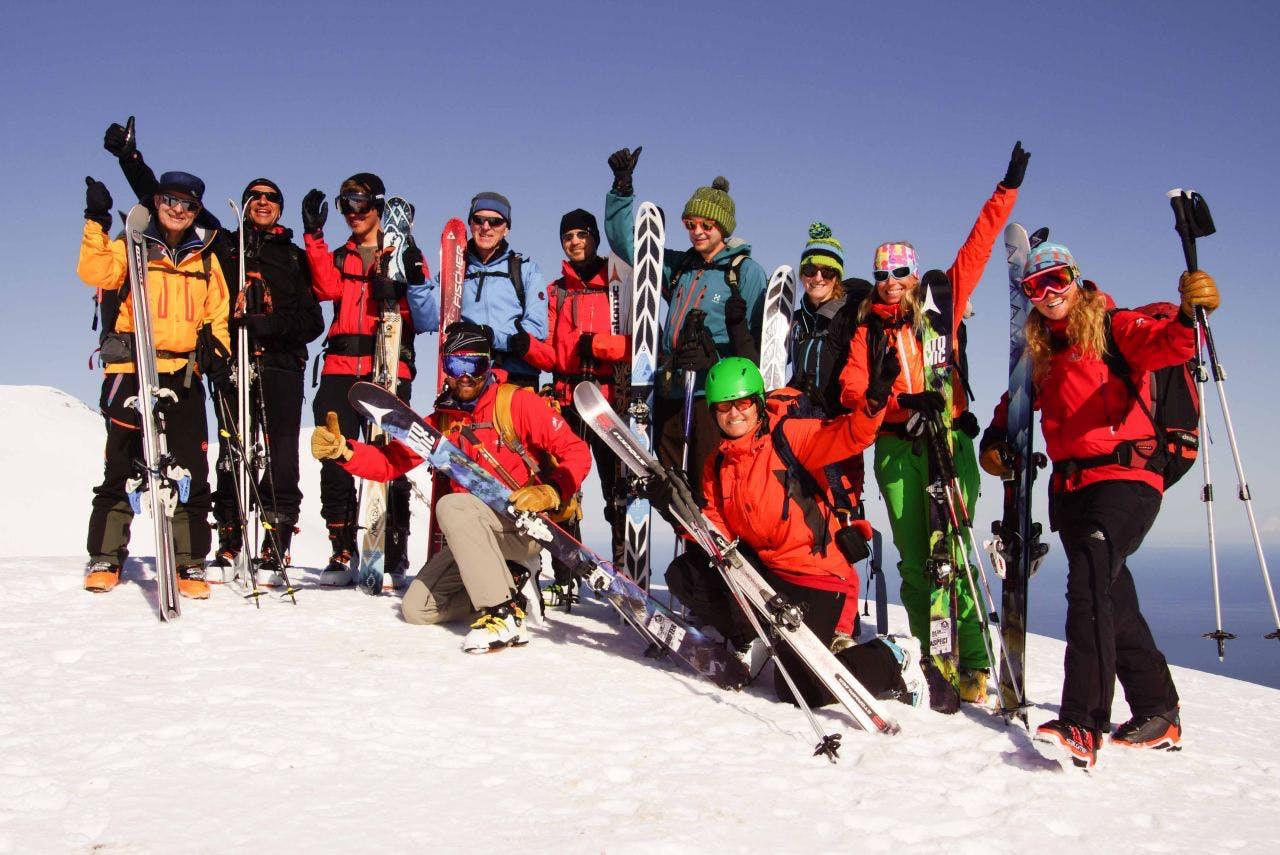Skiing in Iceland: What's the Difference between Cross-Country skiing and Ski Touring?
| All, Travel Guide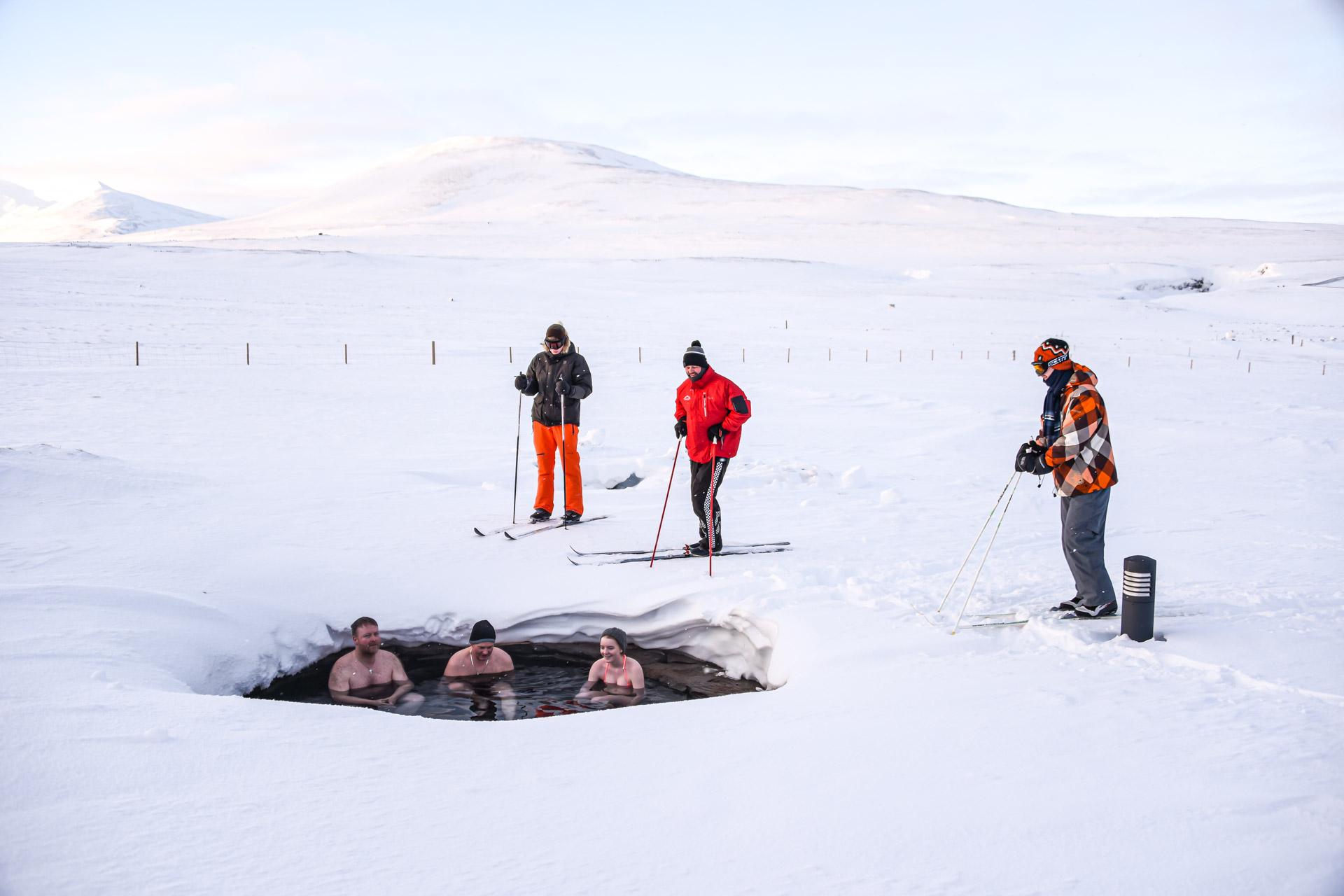
Hot spring bathing and skiing can happen simultaneously in Iceland
Table of Contents
Forget crowded ski pistes, rammed mountain-top restaurants, packed cable cars and long queues; skiing in Iceland (especially cross-country skiing and ski touring) is all about the solitude and unspoiled beauty of pristine nature - and adventure.
Here, you’ll see little in the way of settlements as you cross-country ski for hours and even days across undulating uplands. The peace and solitude of pure nature will make an effort required more than worthwhile.

Cross country skiers in Iceland
What's the Difference between Cross-Country skiing and Ski Touring?
Cross-Country Skiing
Cross-country skiing is a gentler activity than ski touring, but it will still give you a good workout, depending on how hard you push yourself. The German word for cross-country skiing is langlauf - literally meaning ‘long running’. It takes place on flatter land than ski touring - usually undulating terrain. The alternating arm and leg push, kick, and glide help the cross-country skier move quickly over flatter land.
The beauty of x-c skiing is that you don’t need specialist equipment or expensive ski passes (other than your skis, shoes and poles). You’ll need flexible clothing to help you move. They should keep you warm, but not too warm, as you’re constantly on the move.
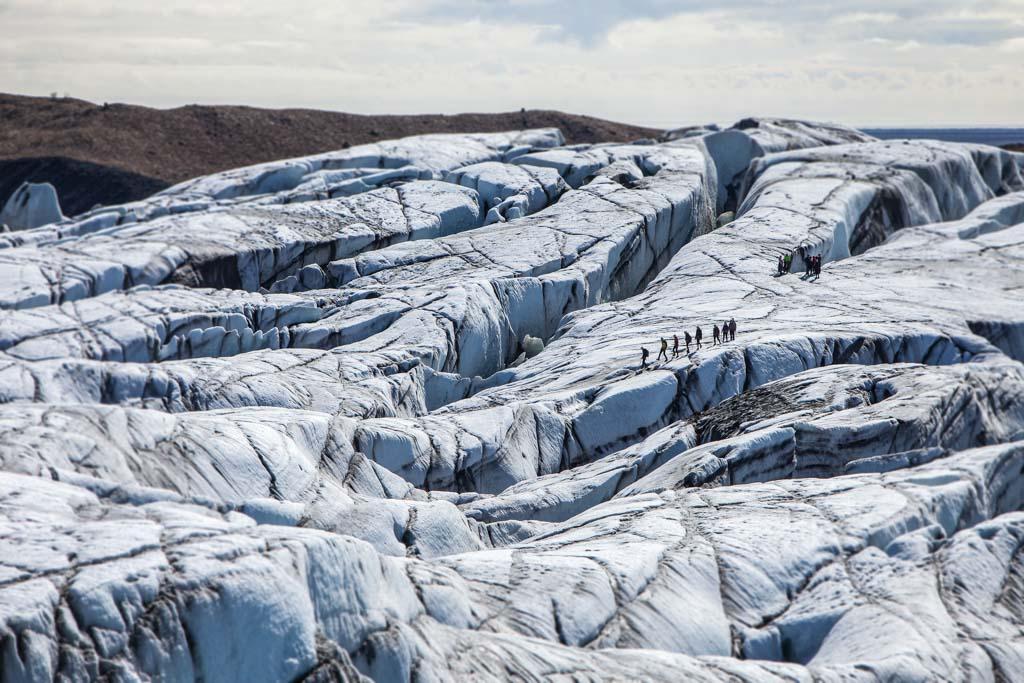
Ultimate Guide to Glaciers and Glacier Hikes in Iceland
Find out all about the fascinating geology of glaciers, from crevasses and moulins to ice caps, outlet glaciers and ice tongues, in our Ultimate Guide to Glaciers and Glacier Hikes in Iceland. We’ll talk you through the terminology, explain how glaciers are created, and then offer you an exciting range of glacier hikes.
What’s great about x-c skiing is that it's good exercise but doesn’t require high levels of fitness or stamina. At the same time, you can make it as leisurely or as physical as you want - akin to the difference between speed walking and running.
Because the pace is slower than downhill skiing, you can take in the beauty of your surroundings and engage with the peace and solitude of the uplands. In Iceland, you can travel for days on x-c skis in the winter season, moving from hut to hut for an all-absorbing experience of subarctic Iceland.
Ski Touring
How does ski touring differ from conventional downhill skiing? It’s a much more physical experience than cross-country skiing. It demands greater fitness and stamina as you have to climb steep slopes. It’s more adventurous and requires good skiing technique. You sure need to know how to use the edges on your skis on steep virgin snow. If you crave adventure and like the thrills and spills of racing off-piste downhill at speed, this is the sport for you.

Ice Caves of Iceland
Find out all about the Ice Caves of Iceland and Take on the Adventure. Iceland’s glaciers are riddled with ice caves. Just one of them, Marble Ice Cave, was discovered in recent years by the Icelandic Mountain Guides team - until then, an undiscovered cave system under the glacier of Virkisjökull. Read more!
Cross-Country Skiing and Ski Touring in Iceland
So you’ve got the picture: cross-country skiing is excellent in Iceland because of the vast, unspoiled uplands at your disposal, sometimes served by mountain huts. You can ski uninterrupted for days, immersed in nature.
Ski touring in Iceland is exceptional, too. In the Alps, you won’t find the unique combination of volcanic landscapes, fjords and ocean at your feet. All this and miles of empty vistas away from the crowds.
When is the best time to ski in Iceland?
The skiing season in Iceland is long, with the first cross-country tracks appearing as early as November and continuing until April. The backcountry skiing season usually starts in December, while you’ll find the best snow from February onwards. The Westfjords, as well as north and east Iceland, have the best conditions for skiing, and the longer daylight periods later in spring offer more extended hours of skiing.
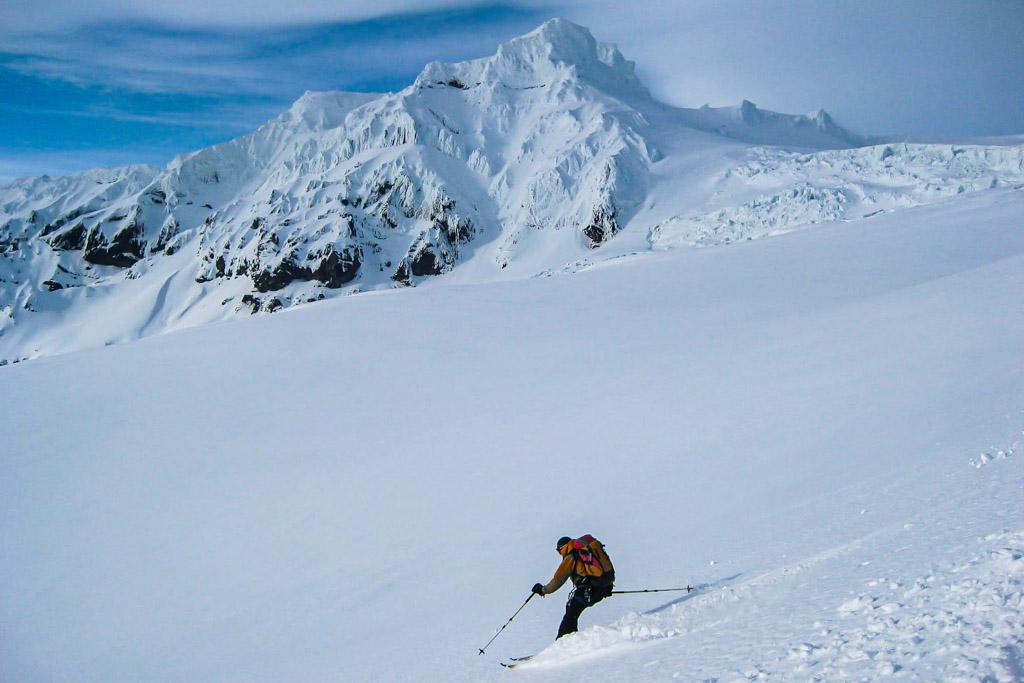
North Iceland is a skiers paradise in winter
Weather conditions
Weather conditions in Iceland change from day to day and sometimes from hour to hour. Before setting out, check the weather, the wind speed, visibility and how much daylight you have - and plan accordingly.
Skiing always comes with some risk, but the risk can be managed if you are well prepared, well informed and have a professional local guide.
You’ll need to factor in the time it will take you to get up the slopes if you’re ski touring, and you’ll need to be aware of the snow conditions. Always monitor avalanche warnings on safetravel.is. Download their app. If you’re concerned about safety, join a guided tour with Icelandic Mountain Guides trained in safety to a very high standard and have local knowledge and experience of the conditions and terrain.
Safety considerations
- Be prepared for changing weather conditions
- Stay on marked trails
- Bring proper safety equipment
- Travel in groups with a local guide who knows the terrain. IMG have a reputation for highly qualified guides and exceptional ski tours.
- Follow avalanche safety protocols
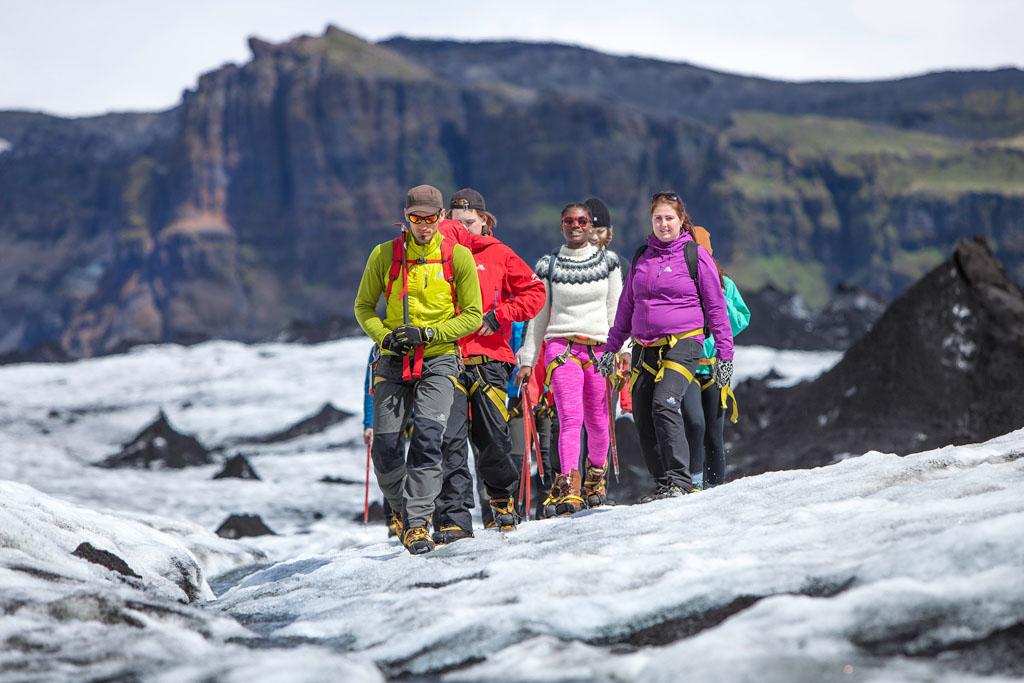
What to Wear on a Glacier Hike in Iceland
Our guide, What to Wear on a Glacier Hike in Iceland, has all the information to help you prepare for your first glacier hike. We’ll tell you what clothing is best, which equipment you’ll need and where the best beginner glacier hikes are - safe in the knowledge you’ll have expert and highly trained guides leading your trip.
Popular Skiing locations in Iceland
Troll Peninsula
How often do you get to ski from mountain to ocean in Europe? This is the magic of Tröllaskagi - Troll Peninsula. This area of north Iceland is marked by mountains and fjords that shape the rugged coast.
Icelandic Mountain Guides offers a ski-packed six-day tour of this stunningly beautiful area of north Iceland with some of the best skiing conditions in Iceland.
On the Six-day Mountain and Fjords Ski Tour, your guide will benefit from their considerable local knowledge. Let them take over the cooking, too, as you soak in a hot tub in the comfort of the self-catering accommodation at the end of an energetic day on the slopes. This tour offers skiing at its most demanding and exhilarating.
Alternatively, book the Siglufjörður Ski Tour, which also offers six days of the finest backcountry skiing and ski mountaineering on the slopes surrounding Siglufjörður, overnight in Sigló, a rustic but comfortable newly-built hotel by the fisherman’s marina in the town of Siglufjörður with an outdoor hot tub, where you can relax after a hard day’s skiing and climbing.
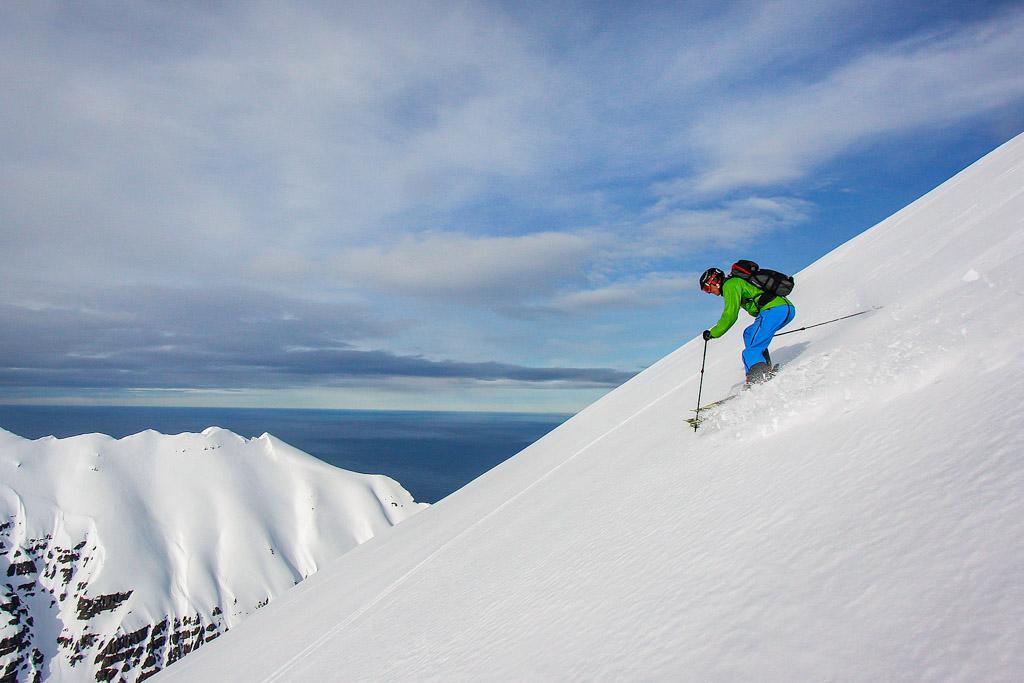
Skiing on Troll peninsula is especially rewarding
Vatnajökull National park
The park is the outdoor lover’s playground, covering almost 14% of Iceland’s land mass. This area of incredible natural beauty is marked by a massive ice cap, many outlet glaciers, waterfalls, rivers and geothermal pools and streams, an inspiring location for skiers.
For the ultimate hardcore skiing adventure, book yourself on the Volcano Ski Touring Challenge. The tour lasts five days and takes in a staggering elevation of 2,000 metres (over 6,500 feet) in total. As the trip takes place in May and June (when the sun never sets), you can ski for up to twelve hours, weather permitting!
The ski tour takes three peaks, each more challenging than the last, finishing with Iceland’s highest mountain. All of the peaks are glaciers and active volcanoes. The trip mixes demanding and thrilling skiing with more relaxing sightseeing.
Or how about crossing Iceland’s largest glacier on the Vatnajökull Glacier Expedition? If you fancy experiencing something akin to the intrepid explorers of the Arctic and Antarctic - Amundsen, Shackleton & co - you can spend nine days skiing across the vast glacier, pulling your belongings behind you on a sledge.
You’ll camp on the glacier, but there’s a special treat midway through the journey - a hut with all the basic comforts that are naturally heated by the geothermal ground beneath the ice and snow.
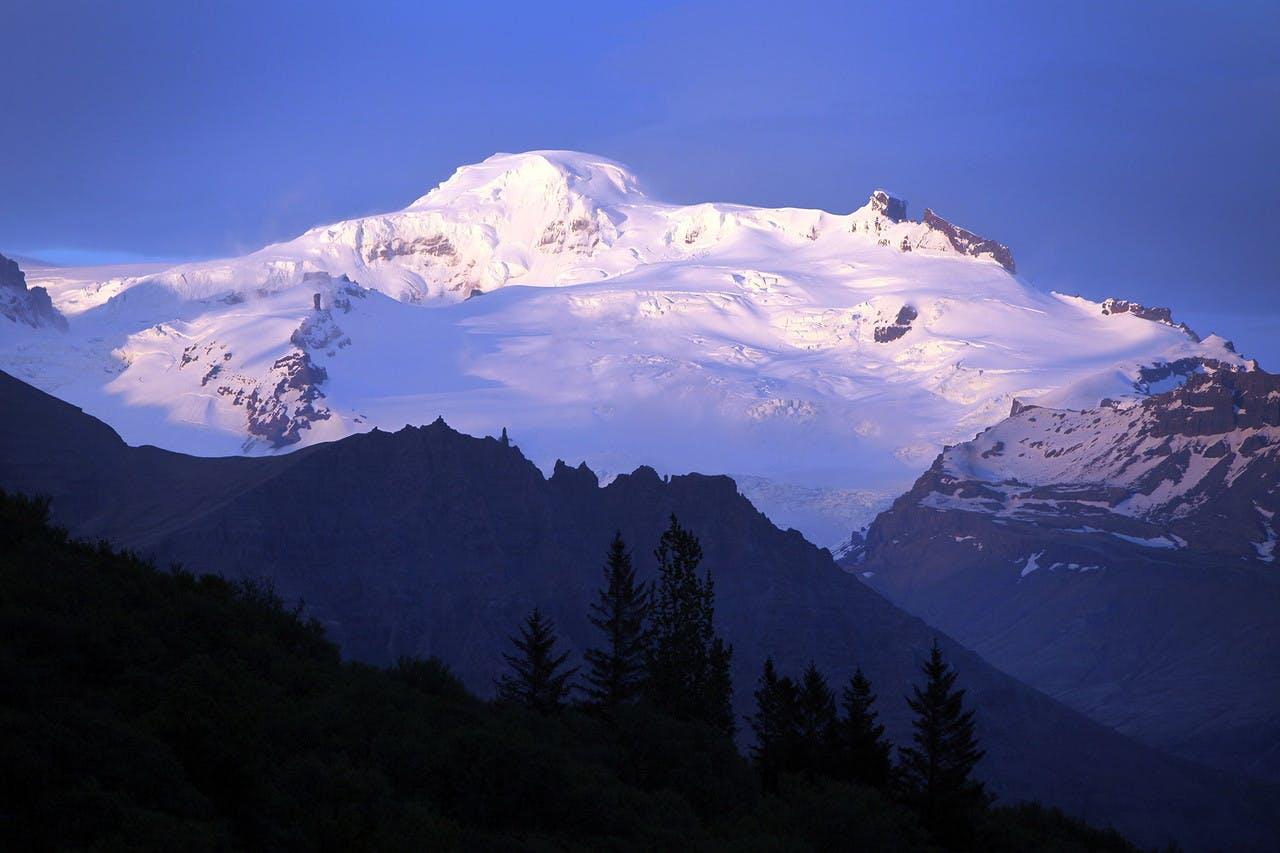
Iceland’s Highest Peak, Hvannadalshnukur
The ultimate challenge for adventurers in Iceland is climbing Iceland’s Highest Peak, Hvannadalshnukur. Our guide to Iceland’s highest mountain tells you everything you need to know: how to prepare for the climb, how to stay safe, how to get there and what route to climb, sn much more.
The Icelandic Highlands
Driving into Iceland's interior is an adventure - but that's only possible in the summertime. The region is completely inaccessible for normal cars during most of the year so if you'd like to go skiing in this area, you need to book yourself on a guided tour.
Cross-country skiing or ski touring in winter adds an extra dimension to this wild and beautiful place of active volcanoes, ragged glaciers, steaming geothermal vents and bright snow-covered fells. Icelandic Mountain Guides offers two multi-day cross-country ski tours, taking in the best of the Icelandic Highlands.
On the first, you’ll spend ten days skiing for seven to ten hours along an ancient route surrounded by stunning scenery. An experienced guide will lead you from the high grounds above Akureyri in the North, over the wilderness of Sprengisandur between the Hofsjökull and Vatnajökull glaciers, to the geothermal area of Landmannalaugar. This is a challenging route for experienced cross-country skiers, a trip that will immerse you in Iceland’s most isolated and beautiful landscapes.
A more accessible tour for x-c skiers with some experience is the Landmannalaugar Tour. From a cosy mountain-hut base, you’ll spend five days exploring extraordinary landscapes of volcanic craters, lava fields, snow-filled gorges and geothermal hotspots where steam mists the earth.
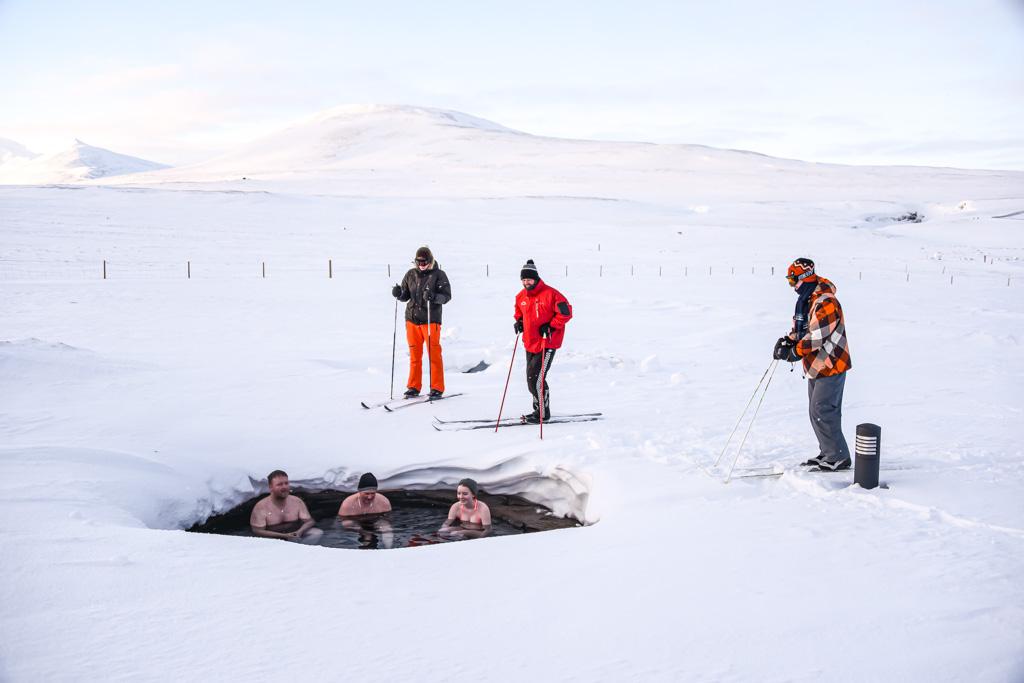
Skiers encounter with hot speing bathers in the Icelandic Highlands
East Iceland
This is an area of Iceland marked by fjords and outlet glaciers that fan out from the awe-inspiring ice cap of Vatnajökull. Beneath it, the dramatic basalt coast is scattered with occasional fishing villages and towns. It’s home to the magnificent Skaftafell National Park, with active volcanoes, glacial rivers and black deserts. In winter, ice and snow transform the landscape.
The East Iceland Nordic Skiing Adventure combines Icelandic comfort with winter adventure. Spend one night in a mountain hut surrounded by nature, one in the sleep-in Museum of the Wilderness Centre with its sauna and hot tubs and two nights in the Highland Hotel Laugafell with its natural hot springs.
During the day, you’ll take in the splendid vistas of East Iceland - and you might catch a glimpse of wild deer. This is a tour for both beginner cross-country skiers and more experienced skiers.

The Ultimate Guide to Hiking Iceland
The Ultimate Guide to Hiking Iceland tells you everything you need to know about trekking in Iceland: where to find the best trails, from single-day to multi-day treks. Our guide covers all the information you require: the elevation gain, distances and high points, and where you can find food and accommodation along the way.
Having clarified the difference between ski touring and cross-country skiing, all you need to do is choose the style of skiing that suits you best.
Do you want to combine climbing (with skin-covered skis) and downhill skiing with all the fitness and stamina required? Do you crave the speed and adrenalin off-piste skiing gives you? Or do you prefer long-distance cross-country skiing at a slower pace through otherworldly landscapes where you can immerse yourself in nature? The choice is yours.
For inspiration on skiing in Iceland, check out our selection of tours.
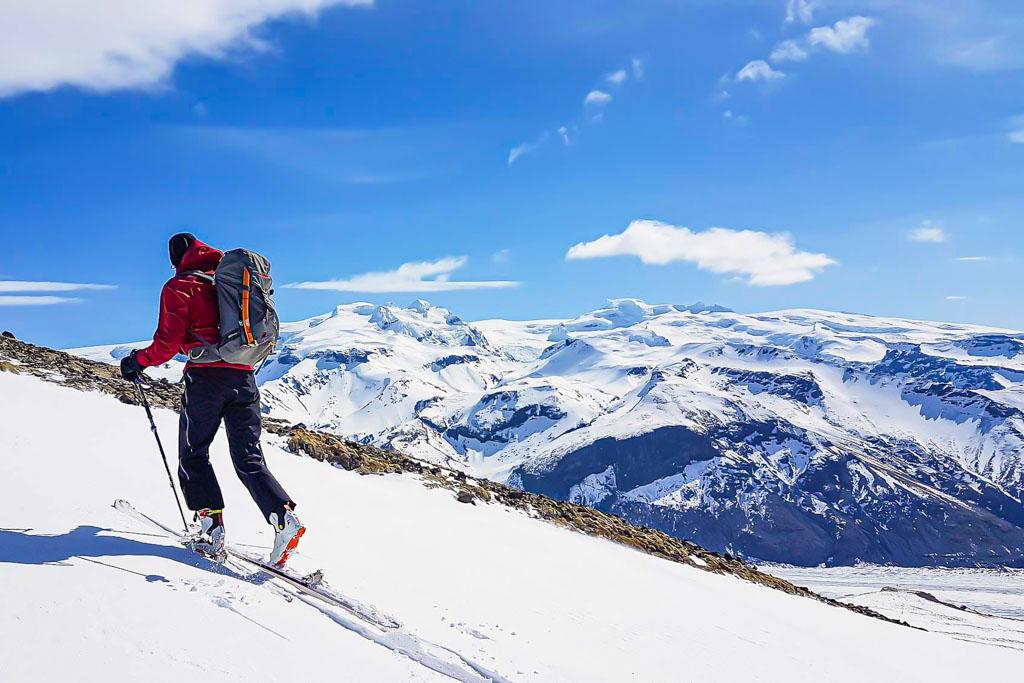
Skier with Hvannadalsnukur, Iceland's highest peak in the background
Questions and answers about skiing in Iceland
Does Iceland have good skiing?
While Iceland doesn’t have the built-up infrastructure of the Alps with its purpose-built ski resorts, mountain-top restaurants, prepared slopes and extensive cable car and chairlift network, Iceland offers something arguably better- particularly for the adventurer or extreme sports junkie.
Ski touring in the peace and beauty of Iceland’s phenomenal nature. For cross-country skiers, you can ski over the vast distances of Iceland’s renowned trails, surrounded by Iceland’s unique volcanic and glacial landscapes.
What months can you ski in Iceland?
Iceland's ski season lasts from November to April, depending on where you go and what kind of skiing you’ll be doing. Some ski touring areas on the higher ground are accessible up to June, especially in the northern fjords.
What is the snowiest month in Iceland?
The best snow conditions are found in February and March.
What is skiing like in Iceland?
We’re biased, of course, but it’s hard to beat Iceland for ski touring and long-distance cross-country skiing in pristine wilderness.
Is there skiing in Iceland in March?
Absolutely - you’ll still find excellent snow conditions in March.
What is so Nordic about Nordic skiing?
You’ll find areas of Iceland with prepared tracks and other places where there won’t be any. One thing’s for sure: you’ll be surrounded by wild subarctic scenery in Iceland - expansive upland fells and peaks uninterrupted by trees.
Is skiing cheaper in Scandinavia than in the Alps?
Skiing in Scandinavia tends to be slightly cheaper than in the Alps because the skiing industry is not as developed as it is in mainland Europe and is less well-known. On top of that, ski touring and cross-country skiing is a relatively cheap options as you’re not paying for ski passes.
Are ski resorts in Iceland crowded?
Because the ski industry in Iceland doesn’t cater for the large numbers typical of the Alps, skiing here is an altogether more serene experience; you’ll feel really connected to the swathes of empty landscapes in Iceland.
Keep me informed about the Icelandic Mountain Guides Blog
Outdoor adventure in Iceland is our specialty. Subscribe to our free monthly newsletter to learn when to go, what to do and where to have the best adventures in Iceland.
Related Blog Posts
Related Tours

